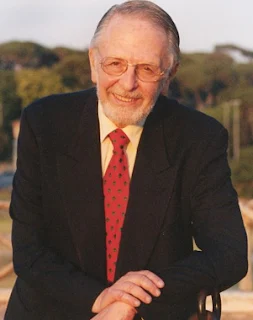 Friedrich A. Kittler was a literary scholar and a media theorist. His works relate to media, technology, and the military.
Friedrich A. Kittler was a literary scholar and a media theorist. His works relate to media, technology, and the military.(June 12, 1943 – October 18, 2011)
Biography
Friedrich Adolf Kittler was born in 1943 in Rochlitz in Saxony. His family fled with him to West Germany in 1958, where from 1958 to 1963 he went to a natural sciences and modern languages Gymnasium in Lahr in the Black Forest, and thereafter, until 1972, he studied German studies, Romance philology and philosophy at the Albert Ludwigs University of Freiburg in Freiburg im Breisgau. During his studies, he was influenced by Jacques Lacan's and Michel Foucault's writings.In 1976, Kittler received his doctorate in philosophy after a thesis on the poet Conrad Ferdinand Meyer. Between 1976 and 1986 he worked as academic assistant at the university's Deutsches Seminar. In 1984, he earned his Habilitation in the field of Modern German Literary History.
He had several stints as a Visiting Assistant Professor or Visiting Professor at universities in the United States, such as the University of California, Berkeley, the University of California, Santa Barbara and Stanford University.
From 1986 to 1990, he headed the DFG's Literature and Media Analysis project in Kassel and in 1987 he was appointed Professor of Modern German Studies at the Ruhr University. In 1993 he was appointed to the chair for Media Aesthetics and History at the Humboldt University of Berlin. Between 2005 and 2011 he was a professor at the European Graduate School in Saas-Fee, Switzerland.[1]
In 1993, Kittler was awarded the "Siemens Media Arts Prize" (Siemens-Medienkunstpreis) by ZKM Karlsruhe (Zentrum für Kunst und Medientechnologie, or "Centre for Art and Media Technology") for his research in the field of media theory.[2]
He was recognized in 1996 as a Distinguished Scholar at Yale University and in 1997 as a Distinguished Visiting Professor at Columbia University in New York. Kittler was a member of the Hermann von Helmholtz Centre for Culture and the research group Bild Schrift Zahl ("Picture Writing Number") (DFG). He died in Berlin. His last words were reportedly "Alle Apparate auschalten", which translates, referring to the machines which were keeping him alive, as "switch off all apparatuses".[3]
Work and its importance
Friedrich Kittler is seminal in the new approach to media theory that grew popular starting in the 1980s, new media (German: Technische Medien, which translates roughly to "technical media"). Kittler's central project is to "prove to the human sciences [...] their technological-media a priori" (Hartmut Winkler), or in his own words: "Driving the spirit out of the humanities",[4] a title that he gave a work that he published in 1980.Kittler sees an autonomy in technology and therefore disagrees with Marshall McLuhan's reading of the media as "extensions of man": "Media are not pseudopods for extending the human body. They follow the logic of escalation that leaves a written history behind it. (Kittler in Geschichte der Kommunikationsmedien. In: Jörg Huber, Alois Martin Müller (publishers): Raum und Verfahren).
Consequently, he sees in writing literature, in writing programmes and in burning structures into silicon chips a complete continuum: "As we know and simply do not say, no human being writes anymore. [...] Today, human writing runs through inscriptions burnt into silicon by electronic lithography [...]. The last historic act of writing may thus have been in the late seventies when a team of Intel engineers [plotted] the hardware architecture of their first integrated microprocessor." (Kittler, Es gibt keine Software. In: ders.: Draculas Vermächtnis. Technische Schriften).
To see more of who died in 2011 click here














